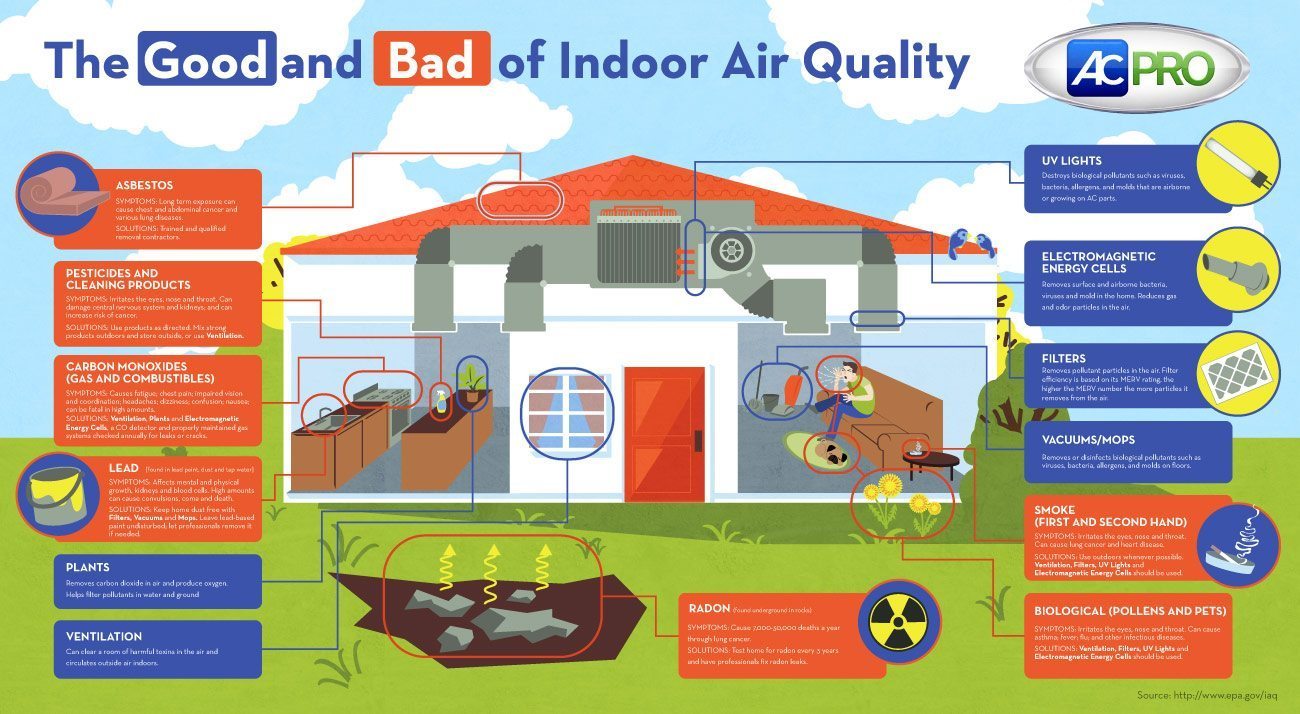With all the attention on pollution from cars and factories, you might think about your home as a sacred space of filtered purity. But the truth is that the air in most homes is two to five times more contaminated than outside.
And city homes with tight spaces are especially susceptible to low air quality. The good news is that you can easily clear the air in your home. We at Modernize think that knowledge is power, and indeed, the first step to clearing the air is knowing about the types of contaminants that lurk in your abode.
VOCs
VOCs—or volatile organic compounds—are carbon-based chemicals that are found in a host of household products, but especially in wall coverings like paint and wallpaper.
VOCs are dangerous because they’re known carcinogens, and they have been shown to contribute to respiratory problems like asthma and allergies.
To ease the contamination from these kinds of products, don’t store opened paint cans in your home, and look for VOC-free products whenever possible. Limit the use of commercial air fresheners and opt instead for natural options like burning sage or cedar incense. To really give you a clear idea of the products you should steer clear of, The National Institutes of Health has a great database of VOC products here.

via The Tao of Dana
Mold
Mold in your home can cause a whole host of health problems, from the innocuous (itching eyes, sneezing) to the serious (permanent lung damage).
Mold thrives in wet and humid environments. The best way to stop it in its tracks is to make sure your home has no mystery leaks or unwanted moisture. Some common culprits are air conditioning ducts—condensation from cooling air can collect there, creating a haven for mold—and leaking pipes that have gone undetected.
To prevent mold’s reign of terror, make sure to have your cooling system and ducts cleaned regularly every two or three years. And keep a vigilant eye on your plumbing—particularly in closed-off areas like closets, basements, and cabinets. If you notice any leaks, call a plumber to repair them as soon as possible.
Dust Mites
Here’s where it gets kind of gross. You most likely have a roommate you didn’t know about—actually, make that several thousand roommates! Dust mites, microscopic bugs that feed off of dead skin cells, are living in our homes—the average living space may contain up to 10,000 bugs! Even pristine homes are not safe.
So why are dust mites dangerous? While they do not pose as serious a threat for most people, they can be very triggering for those with serious allergies or asthma.
To protect yourself, check your home’s humidity. Mites thrive in moist, humid homes where they can absorb the water in the air. Reduce moisture levels in your home by investing in a dehumidifier, or just by opening your windows on drier days. And, if you can, limit the amount of upholstered furniture in your house—dust mites love it there.
One of the best ways to keep your home’s air fresh and clean, however, is also the simplest: open the windows. Opening the windows every so often keeps your environment clean by letting in air that is less contaminated. Plus, the fresh air just feels great!
About the Author
 Erin Vaughan is a writer and aspiring homeowner based in Austin, Texas.
Erin Vaughan is a writer and aspiring homeowner based in Austin, Texas.



